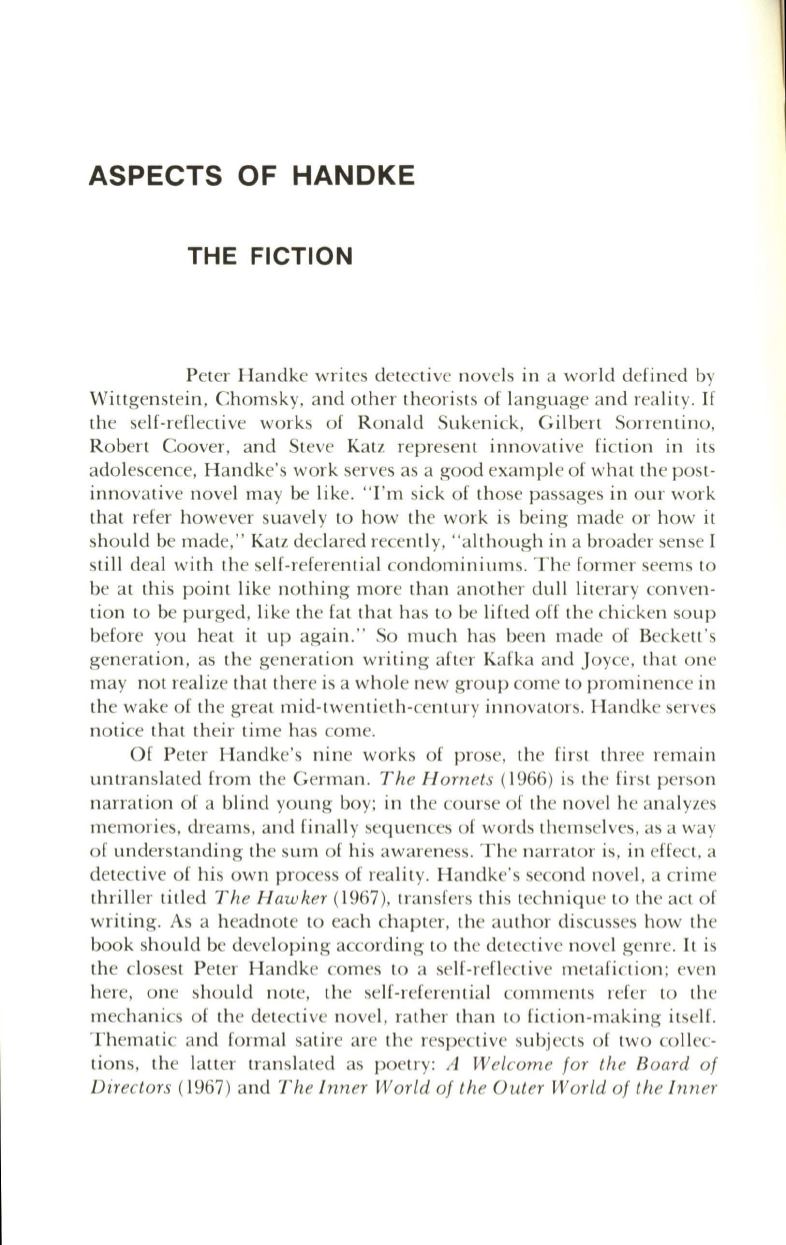
ASPECTS OF HANDKE
THE FICTION
Peter Handke writes detective novels in a world defined by
Wittgenstein, Chomsky, and other theori sts of language and rea lity.
If
the self-refl ective works of Ronald Sukenick, Gilbert Sorrentino,
Robert Coover, and Steve Ka tz represent innova tive fi ction in its
adol escence, H andke's work serves as a good exampl e of wha t the pos t–
innova tive novel may be like. ' 'I'm sick of those passages in o ur work
that refer however suavely to how the work is being made or how it
should be made," Katz decl ared recentl y, "altho ugh in a broader sen se I
still deal with the self-referentia l condominiums. The former seems to
be at thi s point like nothing more than another dull literary conven–
tion to be purged, like the fat th a t has to be lifted off the chicken soup
before you hea t it up aga in. " So much has been made of Beckett 's
genera tion , as the generation writing after Kafka and Joyce, tha t one
may not realize that there is a whole new group come
to
prominence in
the wake of the great mid-twentieth- century innovators . H andke serves
notice tha t their time has come.
Of Peter H andke's nine works of prose, the first three rema in
untransl a ted from the German .
The H ornets
(1966) is the fir st person
narra tion of a blind young boy; in the course of the novel he analyzes
memories, dreams, and fin all y sequences of words themselves, as a way
of understanding the sum of his awa reness. The narra tor is, in effec t, a
detective of his own process of reality. Handke's second novel, a cr ime
thrill er titl ed
The Hawker
(1967 ), transfers thi s technique
to
the act o f
writing. As a headnote to each chapter, the author discusses how the
book should be develo ping according to the detective novel genre.
It
is
the closest Peter Handke comes
to
a self-refl ective metafi cti on ; even
here, one should note, the se lf-referenti al comments refer to the
mechanics of the detecti ve novel, ra ther than to fi cti on-making itself.
Thematic and formal sa tire are the respective subj ects of two co ll ec–
tions , the la tter transla ted as poetry:
A Welcom e for th e Board of
Directors
(1967 ) and
The Inner World of the Outer World of the In ner


